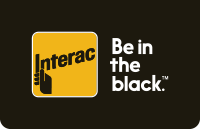Not so long ago I tried to buy $20 worth of cleaning product when the sales clerk said:
“Your credit card has been refused, Ma’am”
“There’s no way- For $20 worth of cleaning product?”
“Let’s try again…Refused again. Do you have another card?”
 My husband communicated with our credit card company only to find out that his card had been compromised and an attempt to use it to buy movie passes in Toronto at the same time as a transaction was taking place in Montreal flagged the card for a possible fraudulent issue.
My husband communicated with our credit card company only to find out that his card had been compromised and an attempt to use it to buy movie passes in Toronto at the same time as a transaction was taking place in Montreal flagged the card for a possible fraudulent issue.
Given that we’re linked on the same account, both cards were frozen. He was told that new cards would be issued. He received his card fairly promptly and 3 weeks later I was still waiting for mine. We called back the credit card company who let us know that they simply re-instated mine since it turned out that mine had not been compromised. What a pain in the neck as I had already advised certain vendors that I would have to give then my new number as soon as it came in…
A few months earlier, someone I know told me that she received a call at her home from her credit card company:
“Hi Mrs. ________, did you make a purchase for $14,000 this morning?”
“$14,000? I didn’t even leave my home yet – No! ”
She was subsequently informed that it was entirely possible that the her credit card info had been scanned via the RFID, which is something than can be done while and RFID card is still in your purse or wallet, as there are scanners than enable such a thing – from a considerable distance as well.
The card was cancelled and re-issued promptly (Note that in situations like this, feel free to agree to agree to cancel your card but do not give any card info, or personal info of any sort address, etc. as they may be attempts to steal information from you. There should be no need to confirm shipping address as the credit card company should have all of that on file. You can also always tell them to send it to your home branch of your financial institution)
 While most of us are not consumed with thoughts of fraud prevention a daily basis , those of us who have been affected by credit card fraud or some form of identity theft, know that when it hits, it can be a pain in the neck to deal with.
While most of us are not consumed with thoughts of fraud prevention a daily basis , those of us who have been affected by credit card fraud or some form of identity theft, know that when it hits, it can be a pain in the neck to deal with.
Back in March (Fraud Prevention Month) I was invited to attend an event to learn more about fraud & fraud prevention. I learned a lot of things, including that the “Dark Web & Deep web” referred to on House of Cards (if you’re a fan) is a very real thing. Creepy and I may have preferred to not know that.
Here are some of the things I also learned that may be of more practical value on a daily basis:
(1) The fact that Interac card numbers are simply used as identifiers and are not associated with nor do they represent an individual’s account number in any way means that account information is not being shared nor can it be “skimmed” at the point of sale.
(2) While most credit cards use RFID (Radio Frequency Identification ) technology for their contactless payment method (aka Pay Pass), Interac uses a Radio Frequency enabled smart card technology for its Interac Flash Debit cards. This is more secure than RFID which is typically used for inventory management.
(3) When a transaction is made using Interac (or Interac Flash), unique values are transmitted for each & every transaction. That means that the same values cannot be repeated or they will be flagged as fraudulent.
(4) One of the greatest concerns with contactless payment technology is “what if someone gets my card & just starts buying stuff?” Interact Flash individual purchases are capped at $100, meaning for any purchase over $100, a PIN must be used. In addition, there is a $200 limit for Interac Flash use, so once the $200 limit is reached via Flash transactions, the user’s PIN number must be used to confirm that it is actually the account holder making the purchases and not an imposter / thief going on a shopping spree with someone else’s card. Once th ePIN is enter the limits are then reset and the cardholder can continue to use the convenience of Flash until the limit is reached again.
(5) Interac has a zero liability policy, which means if someone did snatch your card or you do experience some sort of fraud, you are not liable.
(6) Of $211 BILLION worth of transactions on the Interac Network in 2014, Fraud was limited to $16.2 million (only $3.2 million in Canada!) meaning 99.999% of transactions were legitimate. That number is down from $142.3 million in fraudulent transactions in 2009.
(7) Interac is a not-for-profit organization…SAY WHAT?????? I know, right? RIGHT. Their purpose is to minimize fraud. At the event we spoke with Rob Fodor, VP Risk & Information at Interac and let me tell you the lengths that these guys have gone to to study fraud, analyze fraud and v=develop and implement technology that further prevents fraud is astounding. I walked away with a newfound respect for Interac.
Bottom line: Draw whatever conclusion you’d like, but it looks to me like using Interac as a payment method is a whole lot safer than using a credit card. Something to think about.
Do you have any tips on Fraud Prevention? Please share if you do!
Wishing you a fraudless day 🙂
Tanya

No comment yet, add your voice below!